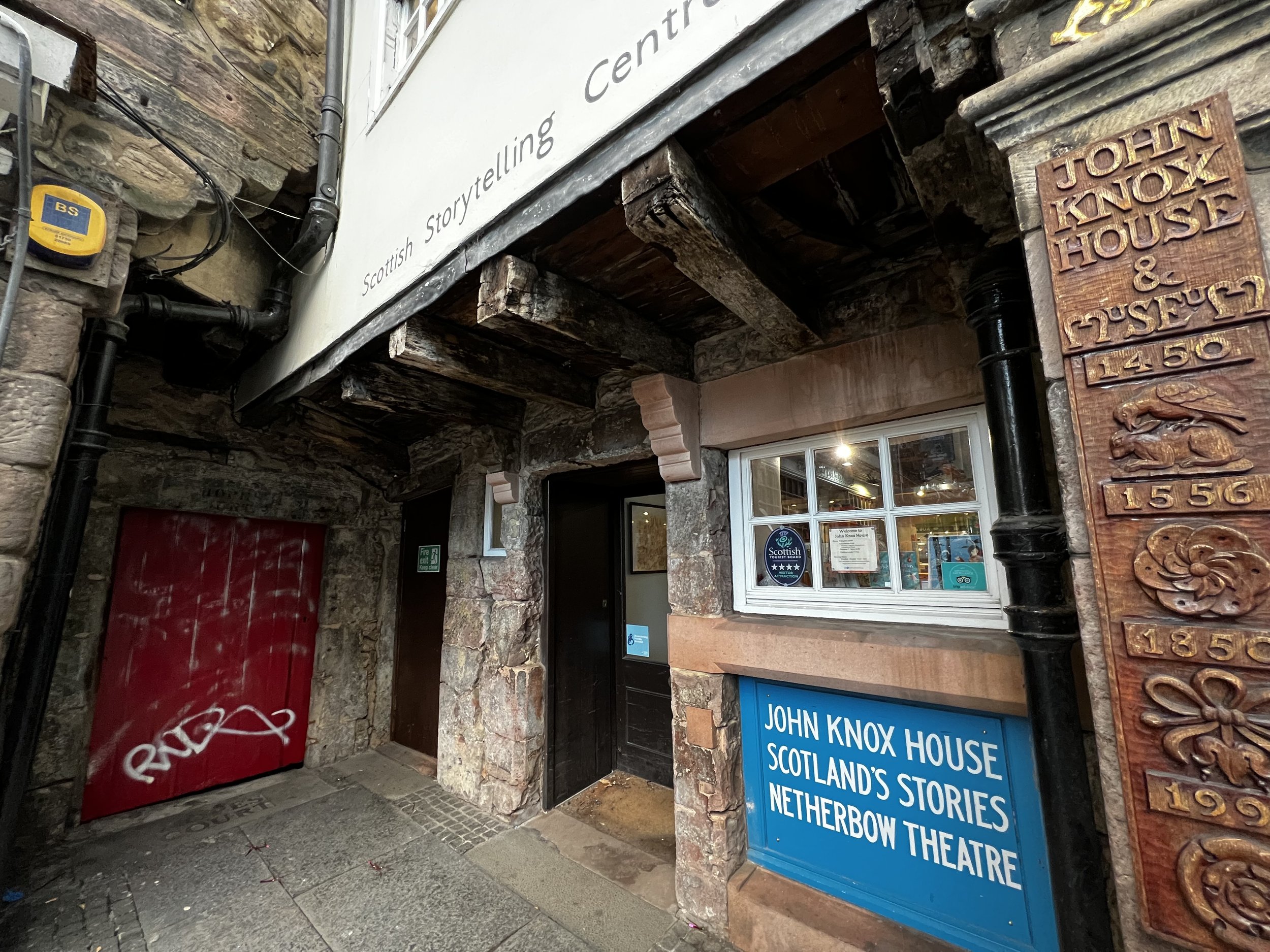The Same Moon
“The happiest lot on earth is to be born a Scotsman.
You must pay for it in many ways, as for all other advantages on earth…
But somehow life is warmer and closer;
The hearth burns more redly;
The lights of home shine softer on the rainy street;
The very names, endeared in verse and music, cling nearer round our hearts.”
The perfect place to drink Bailey’s from a shoe! (Don’t get it? Trust me, let it go. But, if you can’t resist, Google it, but be prepared for some weird British humour!)
We started our day (Dec 6) with a visit to The Choclatarium. (You have to just love Edinburgh—even with ugly construction in the background, there is always something stunning to look at…and the tower and obelisk are beautiful too!)
Amanda made a Christmas tree with dark chocolate, Rice Krispies, sea salt, and seasonal blue and white snowflake sprinkles.
I made my Greyfriars Bobbys with dark chocolate. For two I added only sea salt, and for the third I added sea salt and orange.
It was a fun lesson on where cocoa beans are grown, and how they are processed and refined to make chocolate.
After writing about Greyfriars Bobby on yesterday’s post, I realized I had missed seeing his collar, so we swung back into the Museum of Edinburgh to see some of Bobby’s artifacts.
We then stepped across the street to visit the tomb of another Scottish historical figure—Adam Smith.
Adam Smith was a Scottish economist and philosopher who was a pioneer in the thinking of political economy and a key figure during the Scottish Enlightenment.
From chocolate, to Bobby, to Smith—we switched gears again, this time to another Outlander filming location—Tweeddale Court. The real joy of Edinburgh’s Old Town is to explore the labyrinth of closes and wynds, each transporting you back many centuries into another world.
Walking down the narrow passageway you emerge through a pair of iron gates into a courtyard, with Tweeddale House directly in front of you.
The building is something of an architectural detective story, changed and adapted many times over the years. Inside are the remains of a carved doorway dated 1576, with the initials of perhaps the first owner, Neil Lang and his wife Elizabeth Danielstoune. Lang was Keeper of the Signet, one of Scotland’s most senior legal officers, and as a wealthy man he followed the fashion of building his town house down a close, tucked away from the noise and bustle of the High Street.
The building came by its present name in 1670 when it was bought by the Marquess of Tweeddale, a senior adviser to King Charles II. In 1791 the building became the head office of the British Linen Bank, and it was probably then that a porch was added to the entrance and iron bars fixed over the windows. (I plagiarized these comments, so I encourage you to read more about the fascinating and mysterious Tweeddale House.)
But, back to the filming of Outlander—Tweeddale Court was used as a market backdrop and where Claire and Fergus are reunited in Session 3. You can clearly see Tweeddale House in the first two picture above.
Switching gears yet again, we wrapped up our day by visiting John Knox House.
Though these openings are currently inside the building where you enter John Know House, the stone fronts were formerly the building’s exterior. The wooden overhang is original and the space behind was part of a shopping market. Between each pillar was a luckenbooth or “locking booth” that could be closed each night. It’s a fascinating part of Edinburgh history that was once everywhere but is now preserved in a few small places like this.
Each trader also had a cellar for storage and manufacture below.
This was the inside of the shop, when the luckenbooths were open for trade. Check out the amazing ceiling timbers and floor planks.
The old timbers continue outside, along with the old stone exterior—amazing.
So many places like Disneyland will attempt to mimic the look of a building like this, but here it is the real deal. John Know House is Edinburgh's only surviving medieval mansion complete with overhanging timber galleries.
The frontage is particularly grand with its classically correct Doric columns and wreaths.
The coat of arms is that of the Mossman's, royal goldsmiths to the medieval Stewart kings and makers of the Scottish crown. The initials can be read vertically or horizontally. JM and MA indicate the marriage of James Mossman and Mariota Arres, an heiress who owned the house.
When Jesus in the New Testament was asked what the most important thing in the Law of Moses, he said, "Love God and your neighbour as yourself," which is carved on the facade in Scots as follows: "Luve God abuve al and vr nychtbour as versel."
The sundial shows Moses receiving the light of God, symbolized by the Sun on Mount Sinai.
It was a super cool old house to explore, with creaky wood floors, a stone spiral staircase, and hand-painted ceilings (above).
Here is a view through one of the window panes. Surreal.
In a day full of unusual segues, on our walk home we noticed the nearly full moon, so I walked up to Calton Hill and took a few pictures—the perfect end to a perfect day.
The moon and the National Monument of Scotland. Majestic!
Looking west toward the Castle with the Dugald Stewart Monument in the foreground. This may be one of my beloved views—a magical city somehow made even so by nightfall.
The City Dome and the moon reflecting on the North Sea.


























